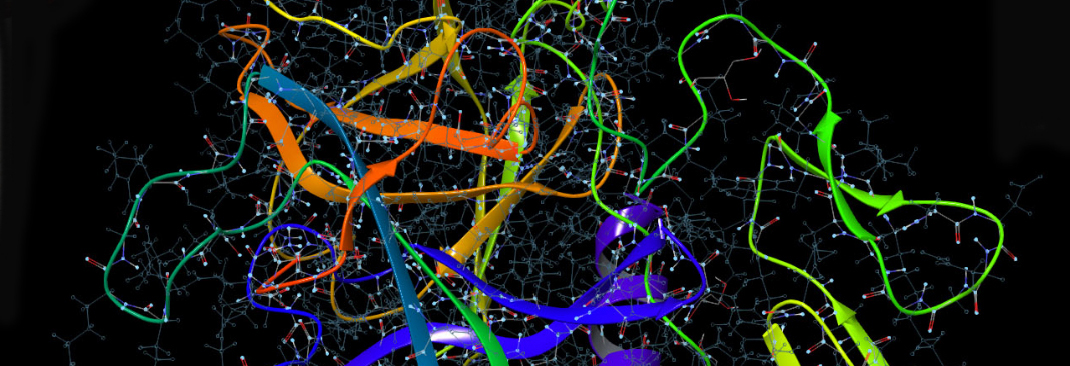
The Workshop on Renewable Energy Sources and Nanotechnology
Laboratory for Preparation and Computation of Nanomaterials - (LPCN)
Wren 2020
SEMINARS
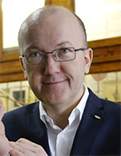
Seminar
Daniel gryko
- PYRROLO[3,2-B]PYRROLES AND DIKETOPYRROLOPYRROLES - FUNCTIONAL HETEROCYCLES FOR OPTOELECTRONIC APPLICATIONS.
ABSTRACT: Recently we have discovered and optimized the first practical synthesis of non-fused pyrrole[3,2-b]pyrroles via domino reaction of aldehydes, primary amines, and butane-2,3-dione.1 Six bonds are formed in heretofore unknown tandem process, which gives rise to substituted pyrrole[3,2-b]pyrroles – the ‘missing link’ on the map of aromatic heterocycles. The parent 1,4-dihydro-pyrrolo[3,2-b]pyrroles served as building block to construct various π-expanded analogs including nitrogen-embedded buckybowl with inverse Stone–Thrower–Wales topology2 and diindolo[2,3-b:2',3'-f]pyrrolo[3,2-b]pyrroles. These compounds constitute the most electron-rich ladder-type heteroacenes known to date - EHOMO was . . . Ler mais . . .
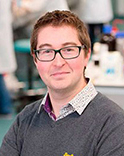
Mark symes
- DECOUPLED ELECTROLYSIS FOR WATER SPLITTING AND BEYOND.
ABSTRACT: There has been much interest recently in electrocatalytic water splitting for storing intermit-tent renewably-generated power (e.g. solar) as chemical fuels such as hydrogen.1 Conventional electrolysers usually require stable power inputs in order to operate effectively and safely and so may be unsuited to harnessing renewable power, which is often intermittent and diffuse. Decoupled electrolysis using suitable redox mediators2 allows oxygen and hydrogen production to be separated in both space and time. The advantages of this approach for harnessing intermittent power sources will be explained, such as the production of ultra-pure product gases3,4 and the potential benefits of using such a . . . Ler mais . . .

Seminar
- AN UNPRETENTIOUS YARN ON ENERGY FROM A CHEMICAL ENGINEERING POINT OF VIEW.
ABSTRACT: In the 1970s the major global concern was the catastrophic predictions of the end of oil reserves. Today, these concerns have shifted to global warming, whose existence has become almost consensual. In this presentation we will recapitulate some important episodes of the tragic history that represents the struggle of man for energy, and raise some important questions that more than allow to predict the outcome of this story, will try to describe the different possible scenarios in which the next chapters will take place.

Seminar
Claudia Longo
- SOLAR ENERGY CONVERSION: PHOTOCATALYSTS FOR APPLICATION IN PHOTO-ELECTROCHEMICALOXIDATION OF ANTIBIOTICSAND FOR CO2 REDUCTION.
ABSTRACT: Semiconductor electrodes have been investigated to convert solar energy for use in different applications of technological interest, such as water remediation[1]and solar fuels production.[2]Films of TiO2and WO3/TiO2deposited on stainless steel (SS) or glass covered with F-doped SnO2(FTO),irradiated by a solar simulator, were used foroxidation of ciprofloxacin (CIP) and amoxicillin(AMX) antibioticsin aqueous solutions by heterogeneous photocatalysis (HP). After inclusion of a Pt counter-electrode, application of an external bias or connection of the electrodes with a solar cell, whichresulted in an electrochemically assisted HP (EHP)configuration, enhanced in 30 % the efficiency for . . Ler mais . . .

Seminar
Eli m. Espinoza
- EXTENDING THE LIFETIME OF NITRATED POLIAROMATIC HYDROCARBONS FOR PHOTOINDUCED HOLE TRANSFER SYSTEMS.
ABSTRACT: Efficient solar-energy conversion relies on molecular-level control of charge transfer for organic electronics. Electromagnetic interactions, originating from the second strongest fundamental force in the universe, occur between charged particles. As electrostatic analogues of magnets, molecular electrets are dielectrics that contain ordered electric dipoles. Much like protein helices, anthranilamides, composed of non-native beta amino acids, possess intrinsic dipole moments originating from ordered amide and hydrogen bonds. Unlike the protein helices, however, anthranilamides have a backbone of directly linked aromatic moieties comprising pathways for highly efficient . . . Ler mais . . .

Seminar
Valentine Vullev
- PEROVSKITES: THE “MIRACLE” MATERIALS FOR SOLAR CELLS. HOW TO “WIRE” THEM AND MOVE CHARGES IN AND OUT OF THEM?
ABSTRACT: Metal-halide perovskites, with composition A+B2+X–3, have exerted one of the biggest impacts in the development of photovoltaics (PVs). The unique electronic structure of the [BX6]4– octahedrons ensures not only long exciton lifetimes, but also separate transport pathways for electrons and holes. The latter feature, along with the small exciton binding energy has made these perovskites practically the “perfect” materials for photovoltaics. The ionic bonding in the A+B2+X–3 crystalline structures is relatively weak, allowing for a certain level of plasticity of the metal-perovskite lattices. This softness of the ionic structure, along with the “looseness” of the large counterion, A+, is key for the benef. . . Ler mais . . .
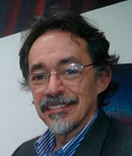
Seminar
Francisco Marques
- LEAD HALIDE PEROVSKITE FILMS SYNTHESIZED BY RF SPUTTERING.
ABSTRACT: Currently, there has been a lot of effort in developing low-cost solar cells using semiconductors made with simple processes, in contrast to silicon, an expensive semiconductor, but used largely today in solar panels. Methylammonium lead halide perovskite,mainly the CH3NH3PbI3structure demonstrateincredible performance with efficiency exceeding 23%.The deposition of the perovskite films is usually carried out by solution-based processes using spincoating techniquesor through thermal evaporation. In this work new methods are proposed using alternatives routes: 1) from sputtered lead sulphidethin film, 2) lead sulphide(PbS) quantum dotsand 3) . . . Ler mais . . .

Seminar
- RECENT WORKS IN MOLECULAR DEVICES AND ECONOMY OF ENERGY.
ABSTRACT: The quest for new technologies in the last decades has targets in all fields of knowledge. Progressively, the mankind has paid attention to the nanotechnology and its particularities. Build nanodevices is a key to obtain more efficient and versatile computers, and reduce the energy cost to do trivial activities, as send messages, compute solutions to problems, and store information. There exist a great number of ways to study and develop nanodevices or maybe idealize nanodevices through simulations. All these approaches ask for schemes that reduce the energy lost and provide better efficiency. In this presentation of 45 minutes, the nanotech . . . Ler mais . . .
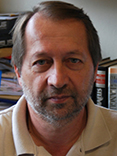
Seminar
- NEW INSIGHTS AND UNEXPECTED PERFORMANCE OF RH-PT ELECTROCATALYSTS WITH LOW PT CONTENT FOR ETHANOL OXIDATION REACTION.
ABSTRACT: Anew strategy to insert small amounts of active Pt atoms in an inactive Rh matrix, forming nanoalloys dispersed in high surface area carbon (Black Pearls® -BP) results in synergistic materials dotted with better activity to CO2selective formation and robustness toward the ethanol oxidation reaction (EOR) in acid media when compared to the pure Pt materials. The results are discussed based on crystal lattice parameter modifications in a way that points out the lattice strain and, consequently, the electronic modification into Pt sites resulted in differences such ethanol adsorption as ethoxide molecules andacetaldehyde as the most active reaction intermediate . . Ler mais . . .

Seminar
- ROOM-TEMPERATURE SOLID-STATE SOLVENTS FOR MOLECULAR PHOTONICS.
ABSTRACT: The optical properties of amyloid staining dyes, such as ThioflavinT (ThT) and 3,3’-diethylthiacyanine iodide (THIA), make them immensely attractive for fluorescence-based applications. THIA and ThT are rotamer dyes,dissipatingenergy via multiple non-radiative pathways. It results in parallel excited-state transient conformational changes, most of which do not undergo radiative deactivation, i.e. they do not fluoresce.1These dyes have a strongaffinity for β-sheet proteins, such as amyloids and bacterial surface proteins.3Binding to proteins suppresses the degrees of torsional freedom of such rotameric dyes and prevents their non-radiative deactivation, increasing their fluorescence quantum . . Ler mais . . .

Seminar
- BENEFITS OF ELECTROSTATIC INTERACTIONS FOR SOLAR ENERGY AND HOW TO PROBE THEM.
ABSTRACT: Electrostatics, a result of one of the fundamental forces of nature, govern and underlie fundamental processes of chemistry, biology and modern technologies, including solar-energy conversion. Peptides and other natural macromolecules owe their structural integrity and functionality to electrostatics. This talk will discuss two structural paradigms where electrical interactions play a central role. (1) Poly-L-lysine (PLL), along with other biological polyelectrolytes, can serve as templates for self-assembly of supramolecular structures and materials. Reported spectroscopic studies show that Eosin-Y (EY), a negatively charged dye, interacts with PLL to form structures with new electronic properties that can be . . Ler mais . . .
Galo carrillo le roux
Marcelo Ricardo Souza Siqueira
Seminar
Germano Tremiliosi Filho
John A. Clark
Maximillian Mayther






WREN 2020. © All Right Reserved
Laboratory for Preparation and Computation of Nanomaterials (LPCN) 2020.